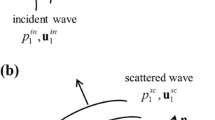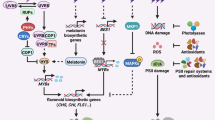Summary
Xylem cavitation has been studied in Ricinus plants using vibration detection to examine its induction by different factors. These observations provide considerable circumstantial evidence in justification of the new technique as already described and further developed. In general cavitation is induced only when the tissue water balance is reduced hydrostatically. Thus cavitation is promoted by intense radiation which enhances transpiration, or alternatively by the blockage of xylem conduits by suspended particles carried in the transpiration stream. In contrast a reduction in radiation, or prevention of transpiration tends to restrict cavitation. Thus cavitation can be prevented by immersing a leaf in liquid paraffin. This technique has been used to see if radioactive bombardment would trigger its induction but no detectable effect has been observed even when exposed to intense radiation.
An excised leaf, losing water in air, produces a “click total”. On restoration to full turgor by standing the petiole in water it recovers very slowly and subsequently its “click total” is much reduced. If however the newly wilted leaf is allowed to recover in water following gas evacuation treatment the “cavitation total” often approaches the original and the rate of recovery is extremely rapid. Apparently gas emboli develop rapidly in conduits which have cavitated, but they can be removed by vacuum injection: the conduits refill and conduction is restored.
Similar content being viewed by others
References
Crafts, A. S.: Solute transport in plants. Science 90, 337–338 (1939).
Dixon, H. H.: Transpiration and the ascent of sap in plants. p. 105. London: McMillan 1914.
Heine, R. W.: Estimation of conductivity and conducting area of poplar stems using a radioactive tracer. Amer. J. Bot. 34, (1970).
Milburn, J. A.: The conduction of sap I. Water conduction and cavitation in water stressed leaves. Planta (Berl.) 69, 39–42 (1966).
Milburn, J. A., Johnson, R. P. C.: The conduction of sap II. Detection of vibrations produced by sap cavitation in Ricinus xylem. Planta (Berl.) 69, 43–52 (1966).
Pierce, G. J.: The state of water in ducts and tracheids. Amer. J. Bot. 4, 623–628 (1936).
Scholander, P. F., Love, W. E., Kanwisher, J. W.: The rise of sap in tall grapevines Plant Physiol. 30, 93–103 (1955).
Stocking, C. R.: Recovery of turgor by cut shoots after wilting. Plant Physiol. 23, 152–155 (1948).
Williamson, R., Watling, A. G.: Transistorised stereo “front-end”. Hi-fi News. April 1094–1096 (1966).
Author information
Authors and Affiliations
Rights and permissions
About this article
Cite this article
Milburn, J.A. Cavitation in Ricinus by acoustic detection: Induction in excised leaves by various factors. Planta 110, 253–265 (1973). https://doi.org/10.1007/BF00387637
Received:
Issue Date:
DOI: https://doi.org/10.1007/BF00387637




